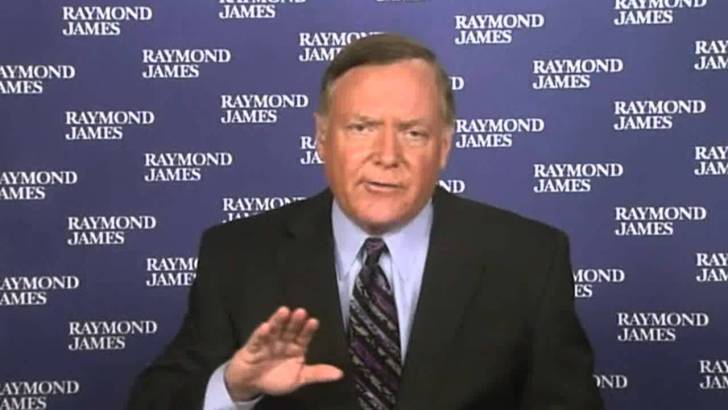by Drew O'Neil, Fixed Income, Raymond James
The Federal Open Market Committee (FOMC) meets for the last time in 2017 this week. On Wednesday, it is widely anticipated that they will announce that they are raising their target benchmark rate (Fed Funds) by 25 basis points, as current Bloomberg estimates currently have the probability of a rate increase at ~98%. If this comes to fruition, it will set the target band for the Fed Funds rate at 1.25%-1.50% and mark the fifth time that they have raised the Fed Funds rate since December 2015. As investors are considering the implications of these actions and how it will affect their portfolios and investment decisions, it is important to keep in mind that the only rate being raised is the overnight rate.
A common misconception is that the Fed raising rates means that the entire yield curve is moving higher. In reality, only the short end of the yield curve takes its direction from the Fed, while the rest of the curve is influenced by other global macroeconomic events. As the short end of the curve and the intermediate to long parts of the curve are influenced by different forces, they often behave very differently, as we have seen since the Fed started raising “rates” in 2015.
The graph below shows the Treasury curve’s movement since December of 2015, from 3-months out to 30-years (the lighter the line, the shorter the maturity). It is pretty clear that different points on the yield curve have behaved very differently during the past two years, over which timeframe the Fed has raised rates 100 basis points. The short-end is obviously higher (although note that almost all of the move higher has occurred in the past year, a full year after the Fed initially raised “rates”) while yields on the long end of the curve are actually lower.
To learn more about the risks and rewards of investing in fixed income, please access the Securities Industry and Financial Markets Association’s “Learn More” section of investinginbonds.com, FINRA’s “Smart Bond Investing” section of finra.org, and the Municipal Securities Rulemaking Board’s (MSRB) Electronic Municipal Market Access System (EMMA) “Education Center” section of emma.msrb.org.
The author of this material is a Trader in the Fixed Income Department of Raymond James & Associates (RJA), and is not an Analyst. Any opinions expressed may differ from opinions expressed by other departments of RJA, including our Equity Research Department, and are subject to change without notice. The data and information contained herein was obtained from sources considered to be reliable, but RJA does not guarantee its accuracy and/or completeness. Neither the information nor any opinions expressed constitute a solicitation for the purchase or sale of any security referred to herein. This material may include analysis of sectors, securities and/or derivatives that RJA may have positions, long or short, held proprietarily. RJA or its affiliates may execute transactions which may not be consistent with the report’s conclusions. RJA may also have performed investment banking services for the issuers of such securities. Investors should discuss the risks inherent in bonds with their Raymond James Financial Advisor. Risks include, but are not limited to, changes in interest rates, liquidity, credit quality, volatility, and duration. Past performance is no assurance of future results.
Copyright © Raymond James















